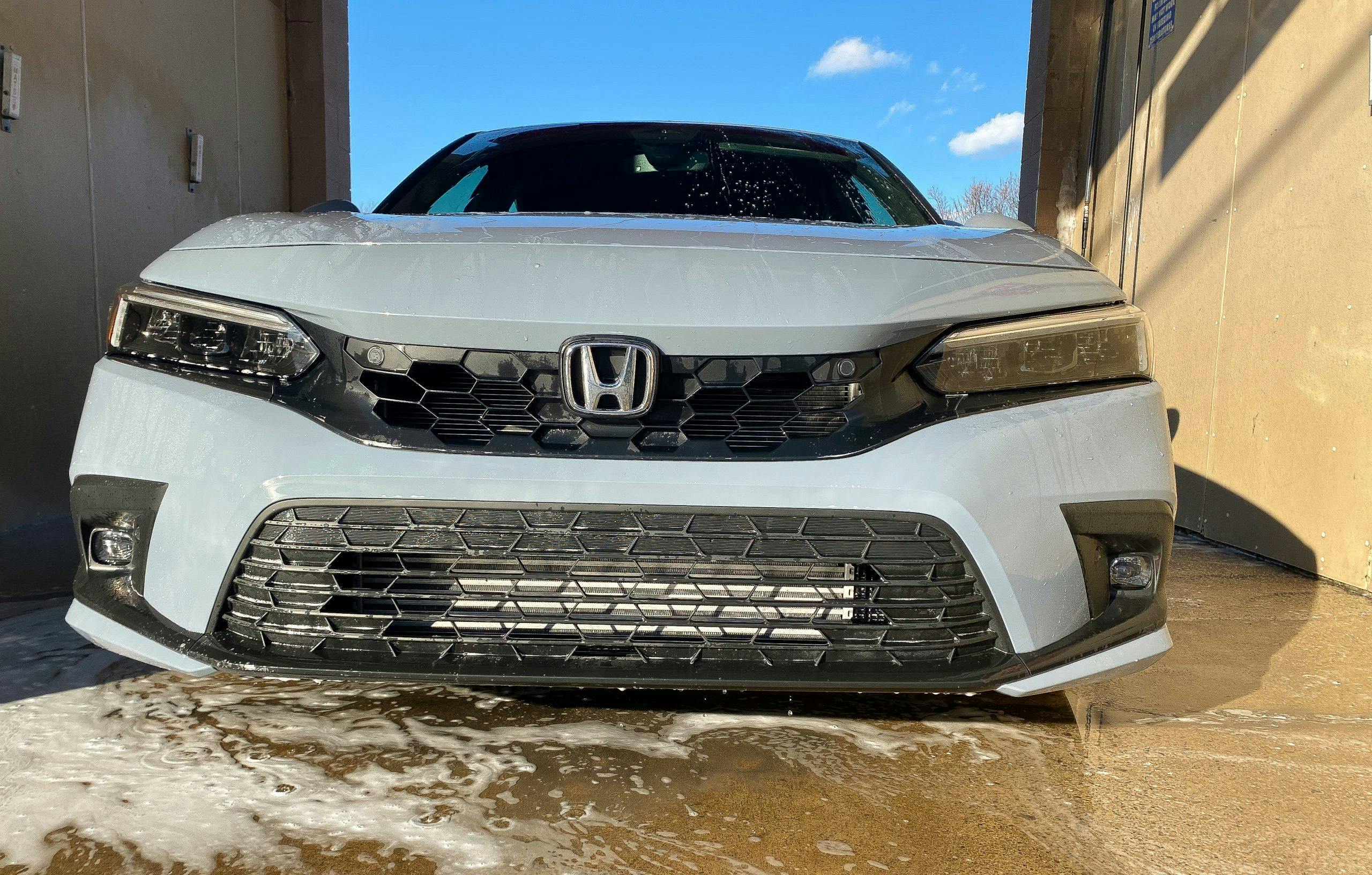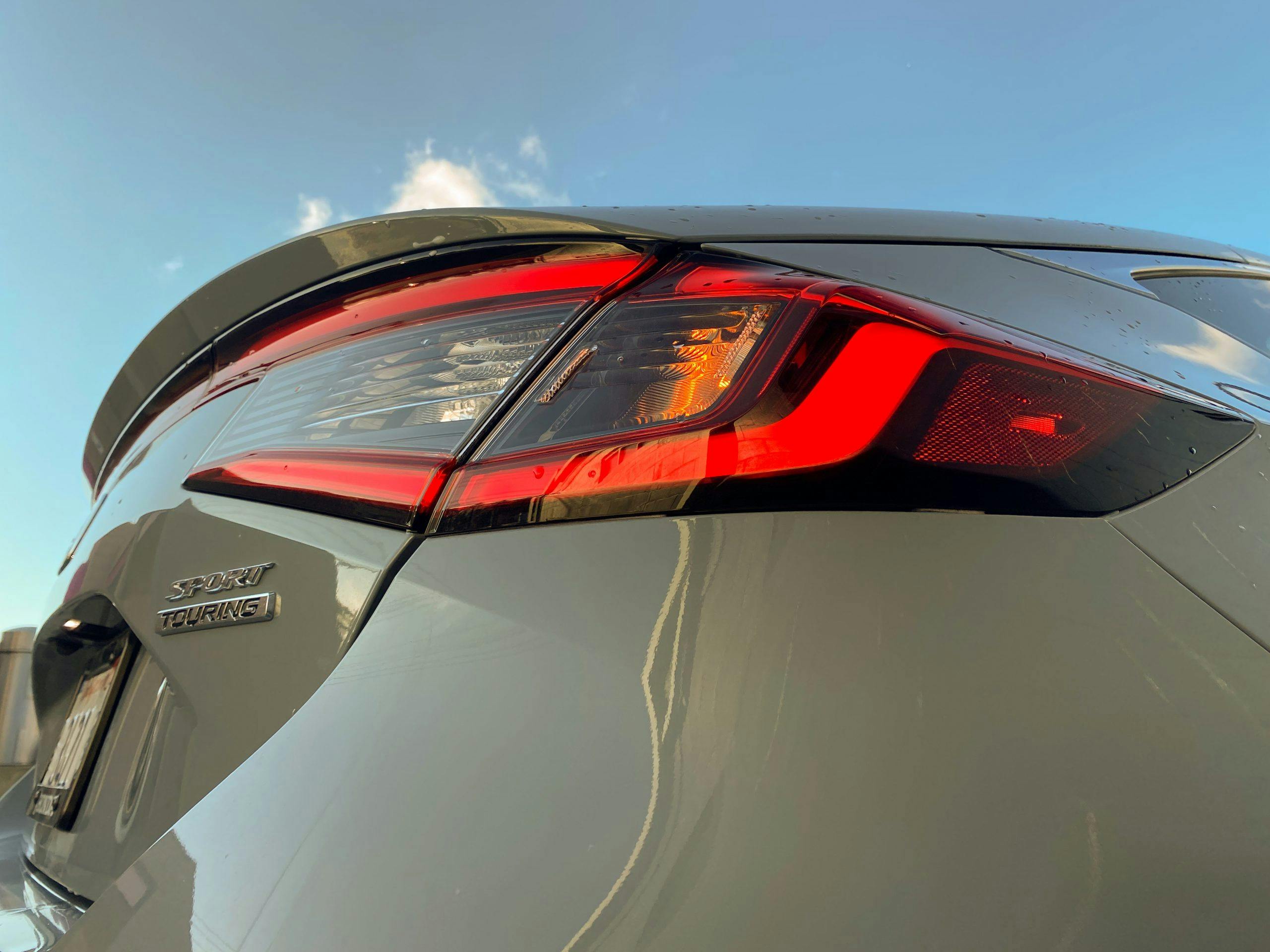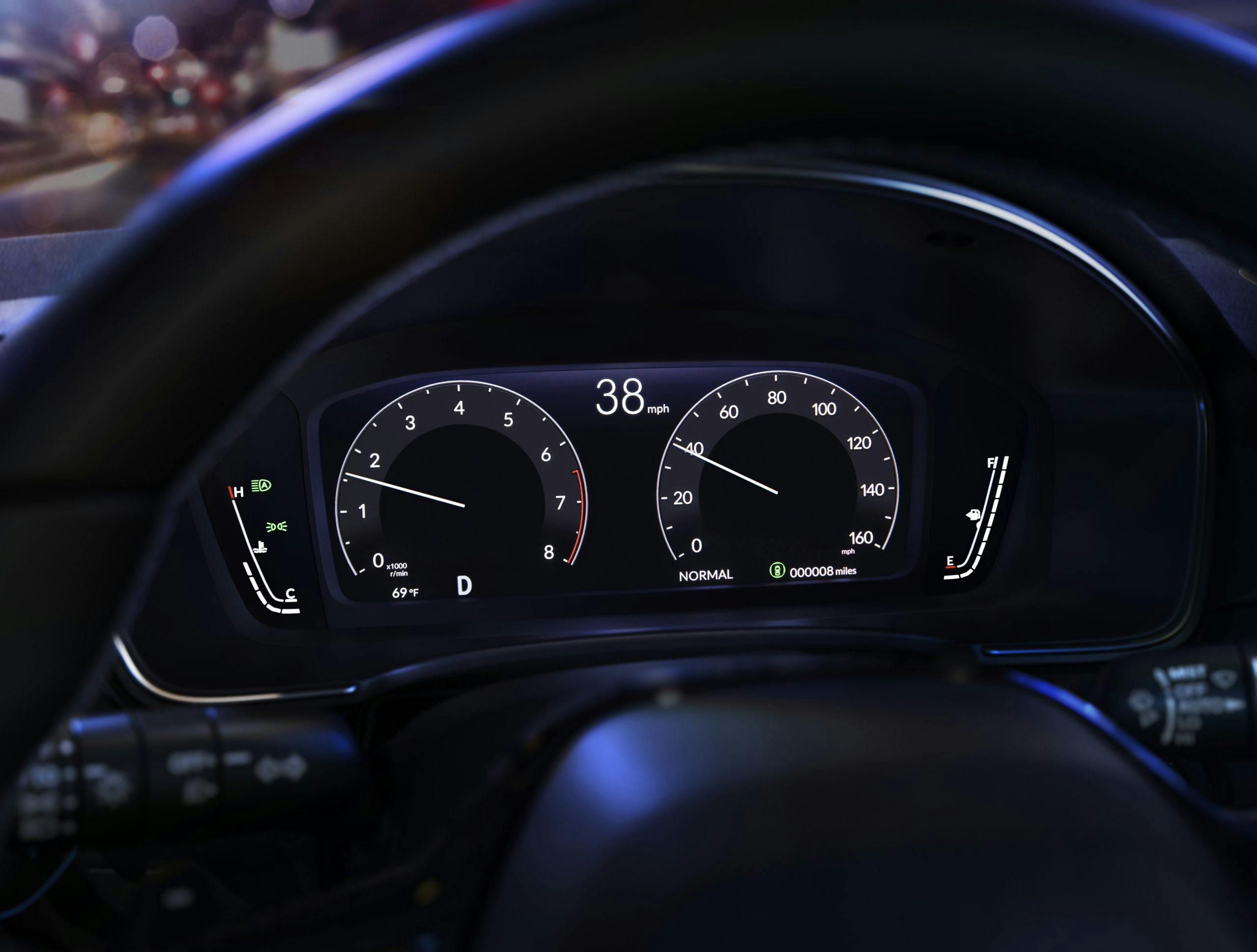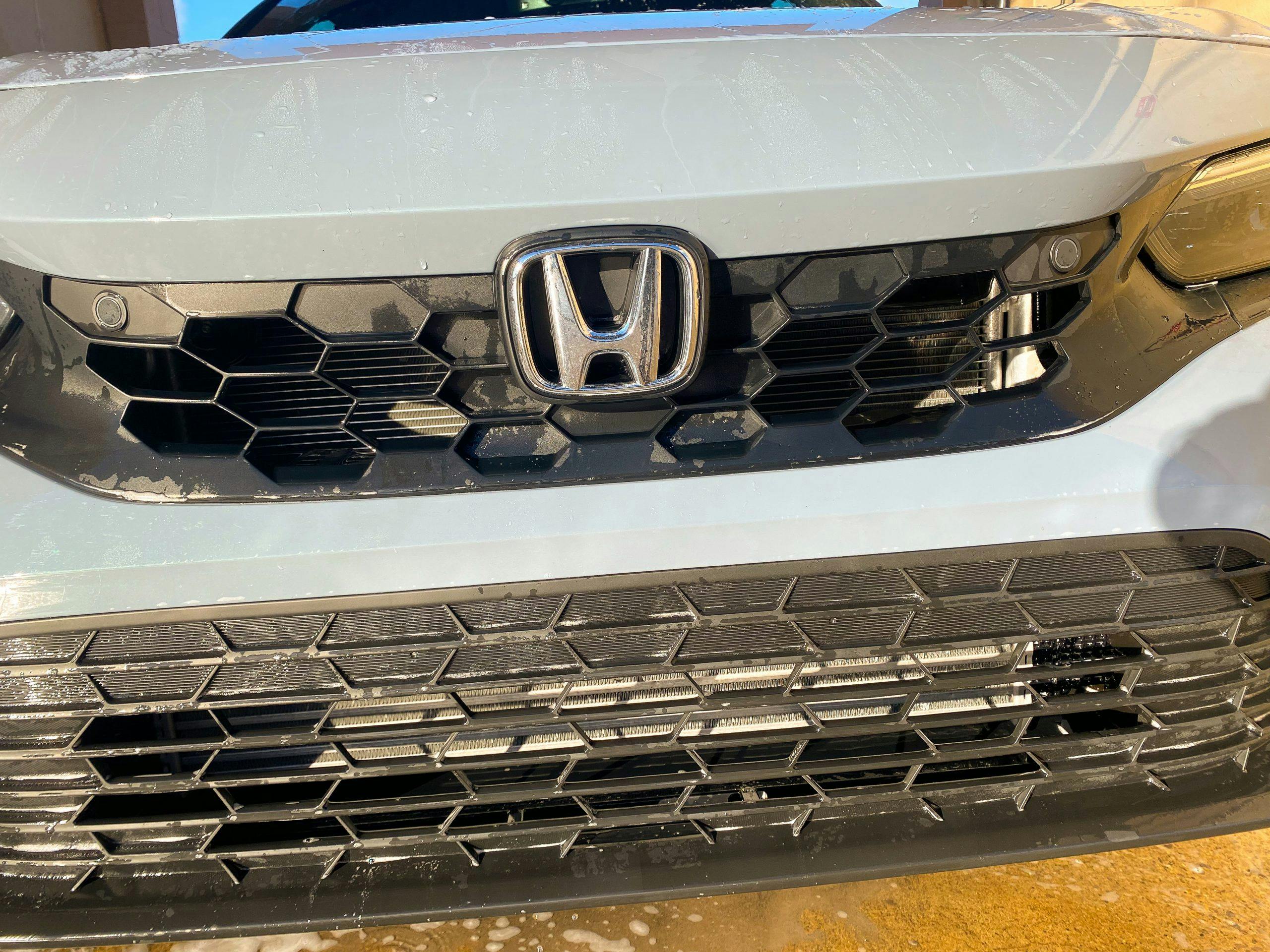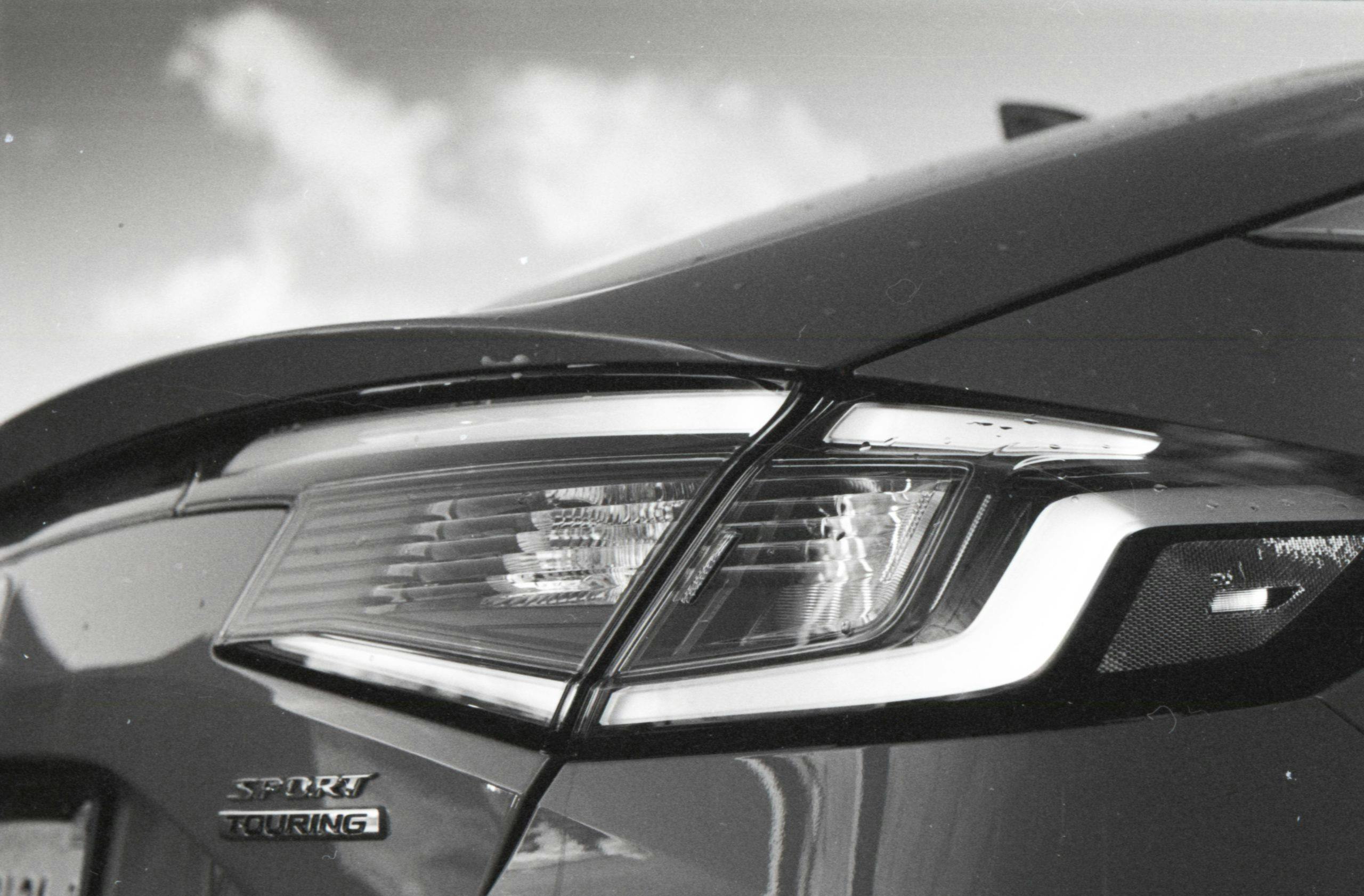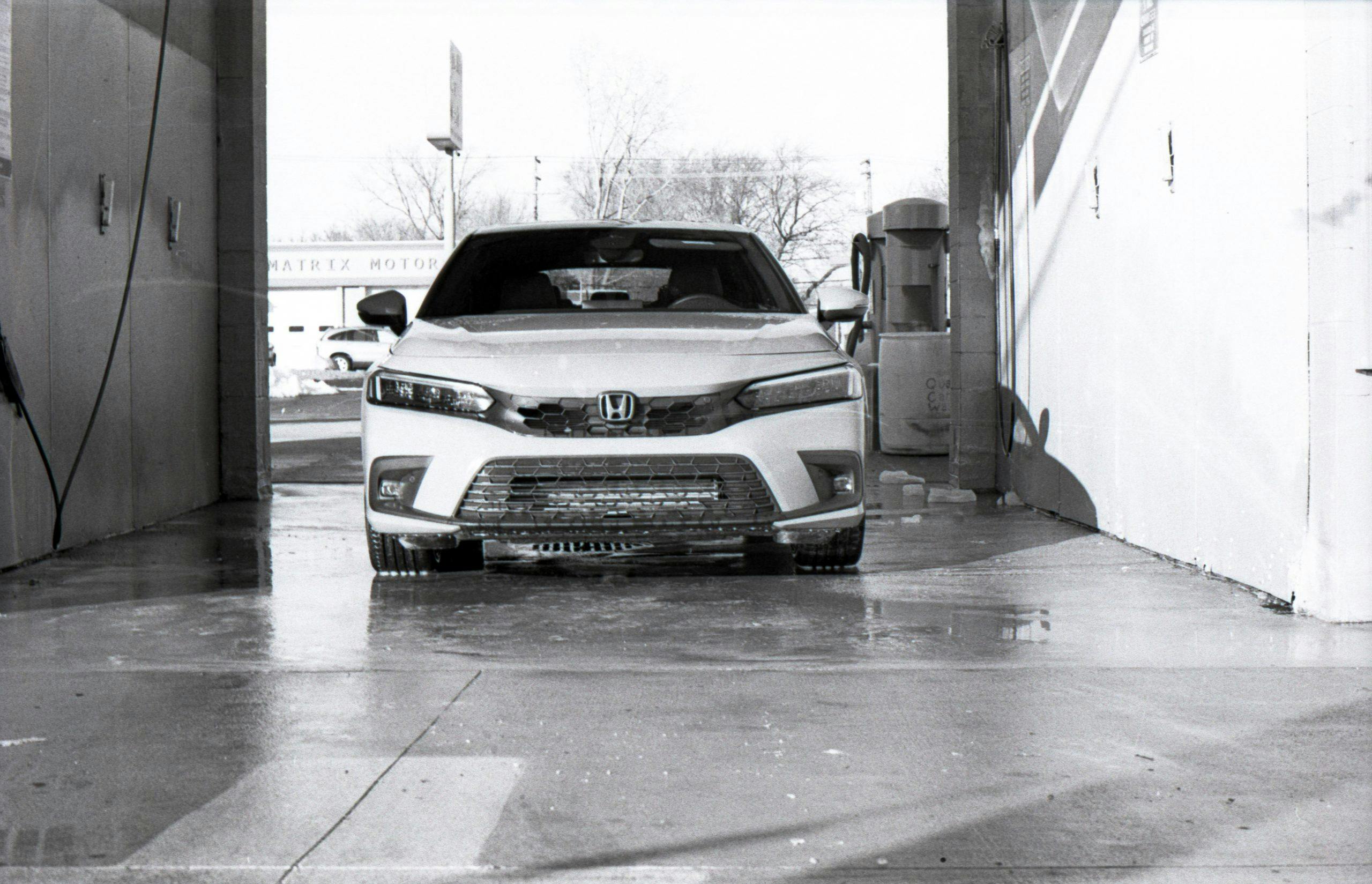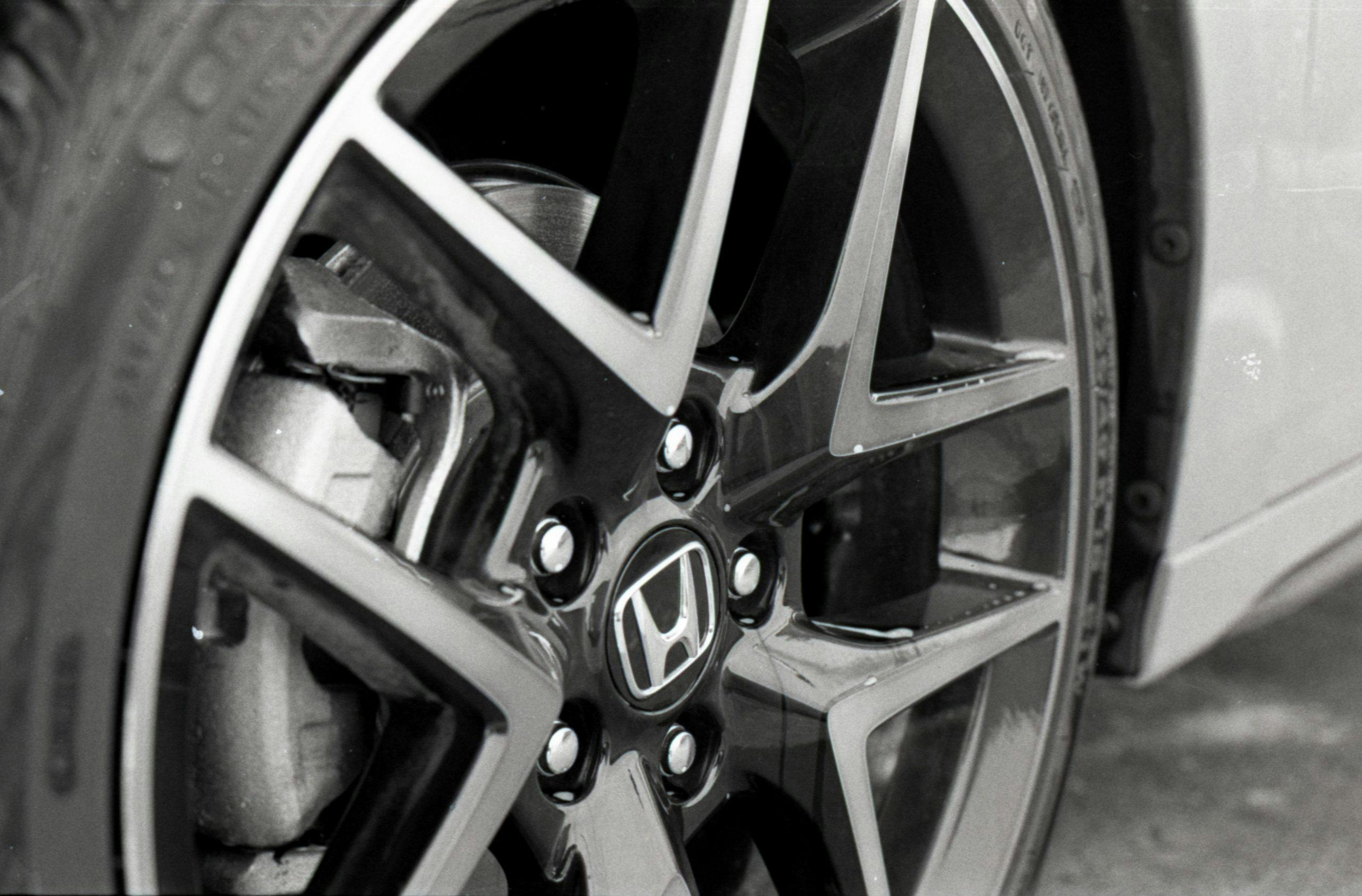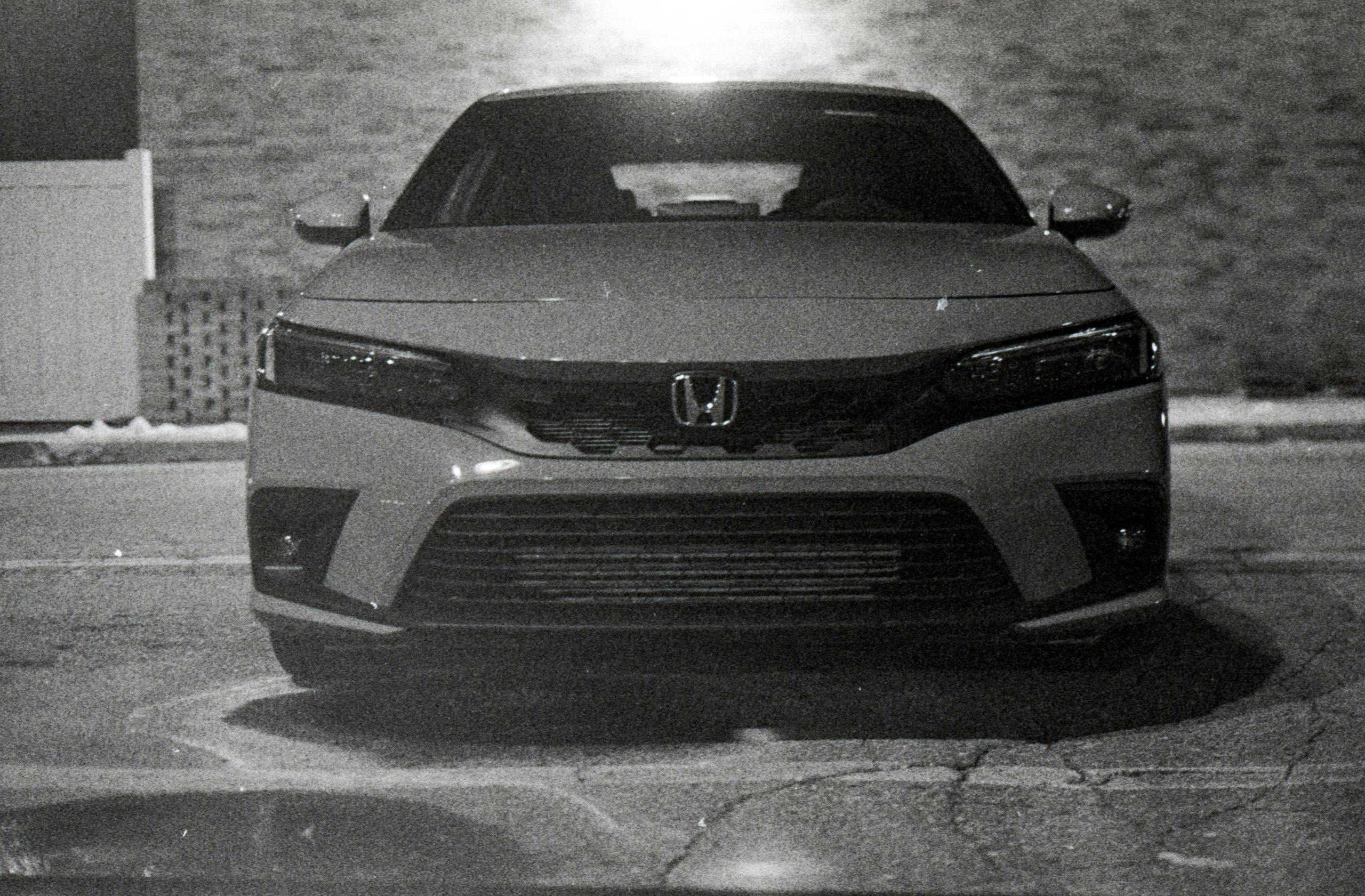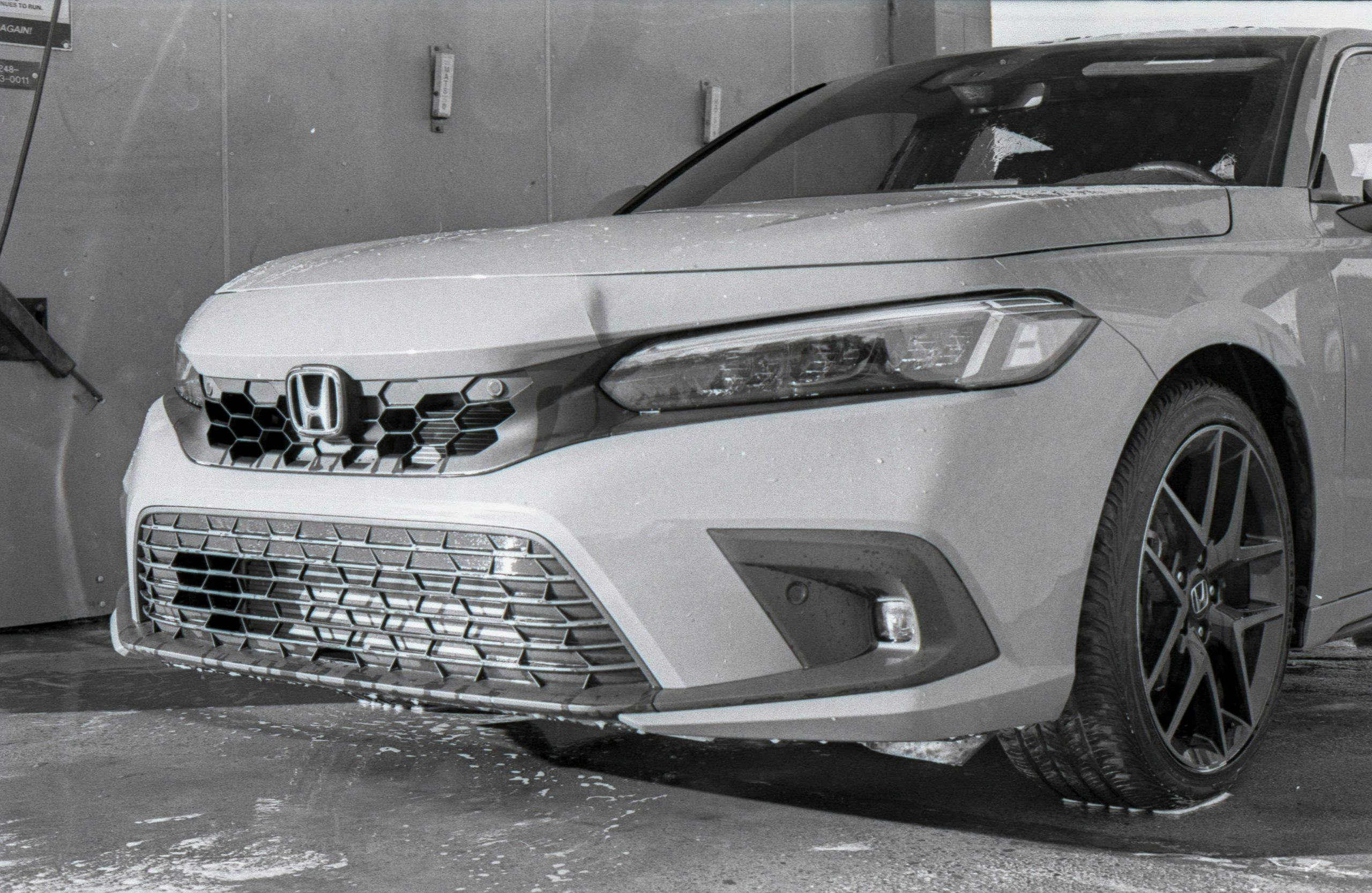Review: 2022 Honda Civic Hatchback Sport Touring
I go down weird YouTube rabbit holes. One week in particular I exclusively watched videos of Lexus LS400s with modded exhausts. Another time, Japanese carpentry techniques. Of late, my obsession has been past-their-prime boxing greats in action: balding Joe Louis, flat-footed Muhammad Ali, panini-press-selling George Foreman. There’s something morbid behind the appeal of these, no doubt connected to the fact that I am myself entering the thickening-waist, thinning-hair part of life where youth is something reserved for my children. Yet there’s also something intriguing—inspiring, even—about one’s ability to outfox aging with a combination of wits and will.
The Honda Civic—of which you are, I promise, reading a review—has been forced to make its own late-career style adjustments. To be sure, its formula is that of the same basic front-drive hatchback Honda introduced to the U.S. market 50 years ago—a remarkable run in an industry increasingly allergic to consistency. Moreover, it has always served the same young, budget-conscious customer: Honda claims the Civic is the number-one selling car among millennials, Gen Zers, and first-time car buyers.
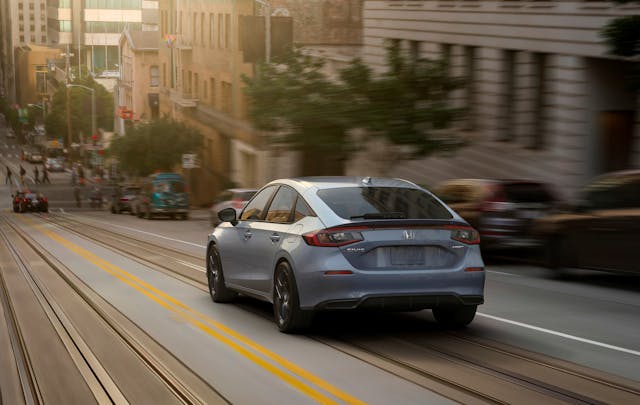
Under the surface, however, the Civic and the arena in which it competes have evolved. For starters, today’s twentysomething buyers don’t have nearly as much money as their parents and grandparents(!) did back in the 1970s, even as small cars have become much more expensive to build. For another, fuel economy testing in this country and displacement taxes in others have driven to near extinction the high-revving, normally aspirated engines that were once the Civic’s calling card.
Honda was slow to react to these changes. The Civic’s prime ended with the eighth-generation (2005–2009) model, whose Si variant revved to 8500 rpm. The ninth-gen car, introduced for 2011, was so cheap-feeling and boring to drive that Honda executives felt compelled to issue mea culpas. The outgoing, tenth-generation car rectified the substantive issues yet still was caught between worlds, with juvenile try-hard styling meeting underwhelming powertrains (obviously I’m not talking about the Type R here).
With the latest Civic, particularly the one you’re looking at here, Honda is making an earnest attempt to appeal to more mature (read: older and richer) buyers. The Civic Hatchback Sport Touring is, in layman’s terms, a Civic Si stripped of a bit of its sporting capability and a lot of its sporting pretensions. The 1.5-liter turbo four-cylinder makes do with 180, rather than 200 hp; the dampers and springs are softer; there’s no mechanical limited-slip differential; and the brakes are smaller. A dubious proposition on paper, in other words, even before one factors in the Sport Touring’s MSRP, which is some $2500 higher at just north of $30,000.
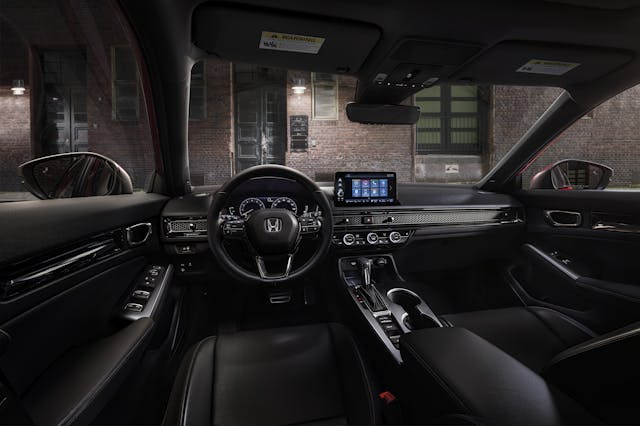
The key reason for that price difference? Whereas the Si is presently offered only as a sedan, the Sport Touring is a hatchback. And not just any hatchback, but perhaps the best-looking hatchback on the market right now. Honda makes no bones about its inspiration, explicitly noting similarities to the Audi A7, Porsche Panamera, and BMW 4 Series Gran Coupe. An imitation, in other words, but a rather flattering one. The proportions of a large German fastback don’t naturally translate to a front-drive Japanese compact, yet Honda designers convincingly hide the Civic’s cab-forward proportions. Even more impressive is that they managed this without sacrificing the Civic’s inherent utility. The fast roofline doesn’t cut into rear headroom, which is the same as in the sedan, and the hatch itself opens wide enough to accept four more cubic feet of cargo than the closest natural competitor, the Mazda 3 hatchback. (And since I’m already picking on Mazda, it’s worth noting that the Civic has C-pillars you can actually see past.)
The Civic makes an even bigger leap inside. What we have here is a conscious departure from the outgoing car’s edgier design, and a clear case of a company listening to customer feedback. Finally, Honda has gotten over the whole, “Welcome to your spaceship, fellow youths!” aesthetic. The inspiration here is clearly from more premium brands, such as Audi, with tasteful applications of chrome and piano black trim. HVAC vents hide behind an egg-crate facade that sweeps across the entire dashboard—a clever and unique touch. The atmosphere is so decidedly grown-up that the boy-racer touches in the sportier Si look discordant. The Sport Touring ditches that car’s very red, fat-bolstered cloth seats for leather-upholstered buckets. Even the manual shift knob has a slightly toned-down, upscale look.
Let’s talk about that manual, shall we? These days, stick shifts are a lot like pizza in that even the bad ones are pretty good. That said, many of the manual gearboxes offered today are on the “delivered cold and the cheese has slid into a corner of the box” end of the spectrum, particularly with regard to the interplay of clutch and throttle. Manual transmissions are afterthoughts in the car development process these days, and they don’t inherently endear themselves to throttle-by-wire, direct-injected turbo engines.
Kudos to Honda, then, for serving up a delectable pie of margherita fresh out of the brick oven. Clutch engagement is seamless, even when the auto stop/start feature is active. The shifter is a hair notchier and slower than is traditional for Hondas but, for that very reason, feels in step with the engine—slicker action might get ahead of the 1.5-liter’s ability to match revs on downshifts. That’s possibly a happy coincidence; more likely, however, a Honda engineer somewhere actually devoted time and expertise tuning the gearbox to fit the application. (Thank you!) The outgoing turbo Civic’s infuriating rev-hang is mitigated here, but not altogether banished. Even still, this is a car in which someone should learn to drive stick, and also the sort that would make clear why they should want to learn. The Civic Si takes things a step further with a lighter flywheel, but the difference, at least on the street, feels minimal.
That last clause pretty much applies to the entire driving experience. The Si’s hardware allows it to accelerate quicker, stop shorter, and corner harder than the Sport Touring, yet those differences aren’t immediately apparent on cold Michigan roads, where the Sport Touring inspires similar levels of confidence and joy. As bossman Jack Baruth noted in his review of the Si, the ride-handling balance feels very similar to a VW GTI’s. The steering, however, feels classically Honda in its quickness and precision.
Honda four-cylinders that revved to 8500-rpm are gone. They are not coming back. Not for nothing are late-model Integras selling for six figures. But if we fixate on a particular definition of how things used to be we risk blinding ourselves to the very good small car Honda has made. The essence of the Civic formula has always been multifaceted—a deliberate balance of refinement, practicality, and engaging driving dynamics. This hatchback nails those ingredients better than any Civic in recent memory, and at a compelling price point.
I’m not trying to deny the fact that some ineffable Honda-ness has been lost in the Civic’s necessary maturation. Civics, even the ones that looked boring, historically possessed a playfulness that doesn’t really come through here, nor on the zestier Si. Post-exile Muhammad Ali would have liked to dance around the ring, but he no longer could. To get back to the top, he had to change tactics. In an era where compact cars are competing harder than ever for relevance over crossovers, this latest Civic is settling in for some world-class rope-a-dope.
2022 Honda Civic Hatchback Sport Touring
Price: $30,415/$30,810 (base/as-tested)
Pros: Looks, feels, and drives like a high-end car.
Cons: 6600-rpm redline.
Summary: Forget the new Integra for a minute. This is what a luxury Civic should feel like.

